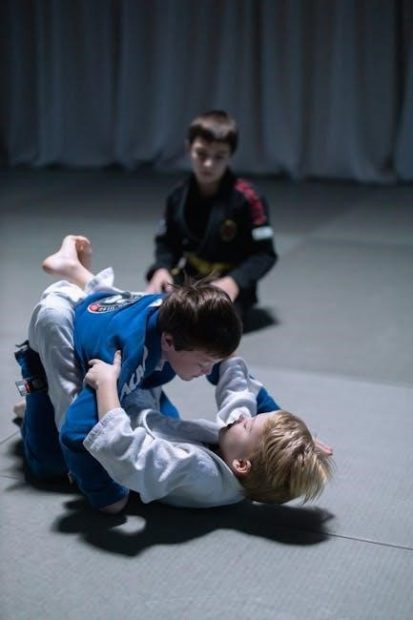Choosing the right BJJ gi size is essential for optimal performance and comfort during training. This guide helps you understand key factors like fit, weight, and height to ensure proper sizing, enhancing your overall BJJ experience.
1.1 Overview of BJJ Gi Sizes
BJJ gi sizes cater to a wide range of body types and preferences, typically ranging from A0 to A6. These sizes correspond to varying heights and weights, ensuring a proper fit for both training and competition. Most brands offer slim, standard, or loose fits, allowing practitioners to choose based on comfort and style. Sizing charts usually include measurements for chest, waist, sleeve length, and pant length, helping to determine the best fit. Proper sizing ensures mobility, comfort, and adherence to competition regulations, making it essential to select the right size for optimal performance.
1.2 Importance of Proper Fit in BJJ Training
A proper-fitting BJJ gi is crucial for both performance and comfort during training. A well-fitted gi allows for optimal mobility, reducing restrictions during movements like rolls, submissions, and transitions. It also prevents discomfort or distractions caused by an ill-fitting uniform. A gi that is too tight may restrict movement, while one that is too loose can bunch up, potentially causing irritation or interference. Proper fit ensures better grip control for both you and your training partners, enhancing the overall training experience. Additionally, a gi that fits well is less likely to experience premature wear and tear.
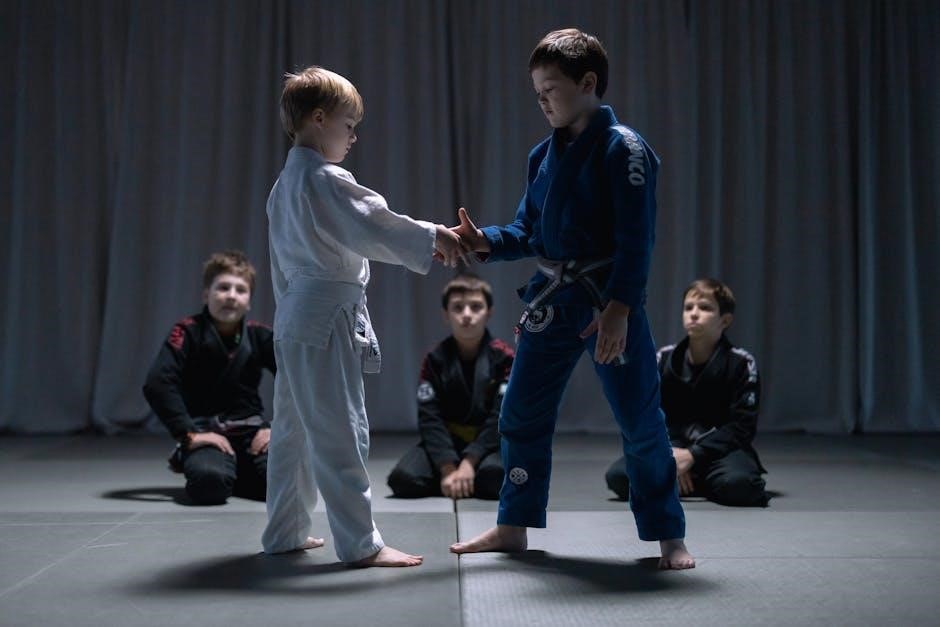
Factors Influencing BJJ Gi Size
Weight, height, and personal preference are key factors in determining the ideal BJJ gi size, ensuring comfort and performance during training and competitions.
2.1 Weight and Height Considerations
Weight and height play a crucial role in selecting a BJJ gi size. Proper fit ensures mobility and comfort, with sizes typically aligned to match average weights and heights. Measuring yourself against size charts helps avoid ill-fitting gis. Brands often provide specific guidelines, so consulting them is essential. A well-fitting gi enhances performance and adheres to competition standards, making it vital to consider these factors carefully.
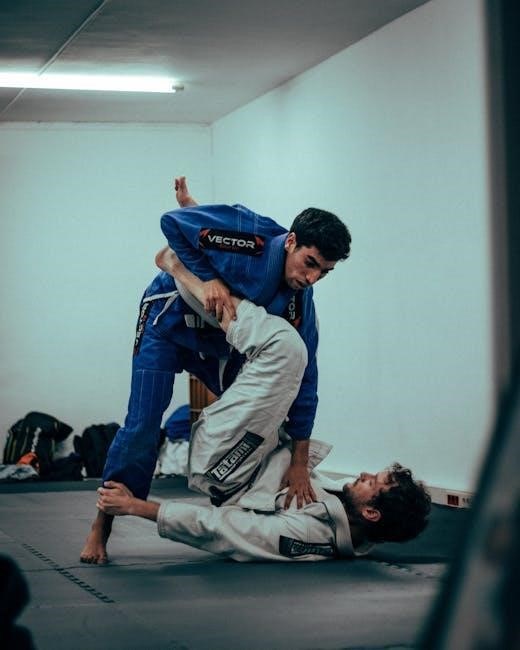
2.2 Personal Preference for Fit (Slim, Standard, or Loose)
Personal preference significantly influences BJJ gi fit choices, with options ranging from slim, standard, to loose. Slim fits offer a modern, athletic cut, reducing excess material for better grip control. Standard fits provide a balanced comfort and durability, while loose fits allow for more movement and comfort, especially for taller practitioners. Considering personal comfort and training style helps in choosing the ideal fit, ensuring optimal performance during rolls and drills.
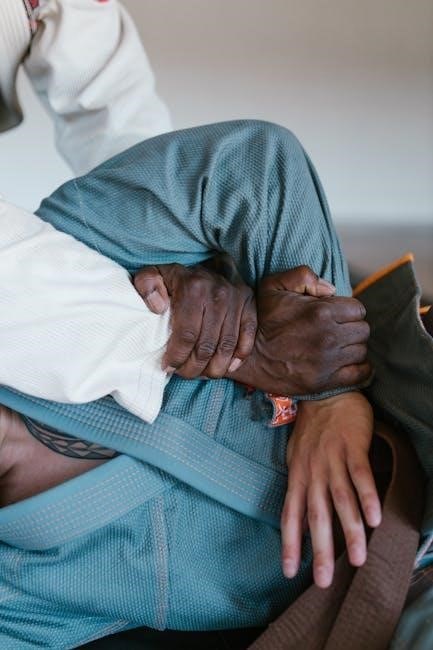
How to Measure Yourself for a BJJ Gi
3.1 Measuring Chest and Waist
Accurately measure your chest and waist to ensure a proper fit. Use a flexible tape measure, wrapping it around the widest part of your chest and natural waistline for precise sizing.
To determine your BJJ gi size, start by measuring your chest and waist. Wrap a flexible tape measure around the widest part of your chest, keeping it level and parallel to the floor. For your waist, measure at the narrowest point, typically just above your hipbone. Ensure the tape is snug but not tight. These measurements are crucial for selecting a gi that fits comfortably and allows for a full range of motion during training or competition. Accurate measurements ensure the best fit for optimal performance.
3.2 Measuring Sleeve and Pant Length
To measure sleeve length, start at the center back of your neck, run the tape measure over your shoulder, and down to your wrist. Ensure the tape is slightly taut but not restrictive. For pant length, measure from the base of your crotch seam down to the bottom of your anklebone. These measurements help determine the ideal gi length for your body, ensuring comfort and mobility. Proper sleeve and pant length ensure your gi fits correctly, allowing for optimal movement during training or competition without excess fabric.
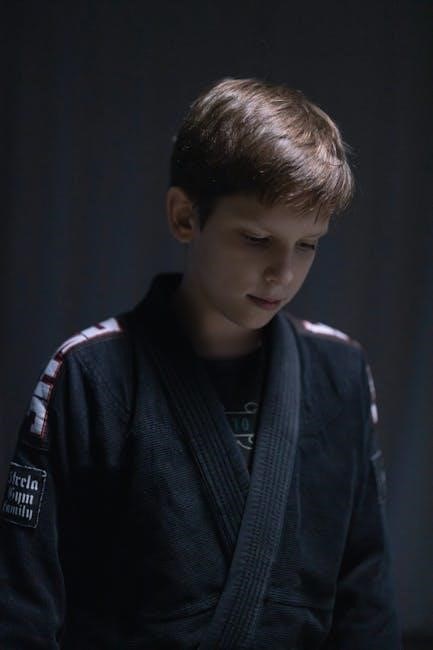
Understanding BJJ Gi Size Charts
BJJ gi size charts are tools to match your body measurements with available gi sizes. Each brand provides specific charts, making comparisons essential for accurate sizing and fit.
4.1 How to Read a BJJ Gi Size Chart
Reading a BJJ gi size chart involves matching your body measurements to the corresponding gi dimensions. Start by identifying your height and weight, then locate these on the chart. Next, compare your chest, waist, sleeve, and pant measurements to the size options provided. Pay attention to specific fit types, such as slim, standard, or loose, to ensure comfort and mobility. Finally, consider factors like shrinkage after washing to make an informed decision.
4.2 Comparing Size Charts Across Different Brands
BJJ gi size charts vary between brands, so comparing them requires attention to detail. Start by measuring yourself accurately, then align your measurements with each brand’s chart. Pay special attention to chest, sleeve, and pant lengths. Some brands offer slim-fit, standard, or loose-fit options, which affect sizing. Check customer reviews or size guides if unsure. Always consider factors like shrinkage and personal fit preferences. This ensures the best fit and performance for your training needs.
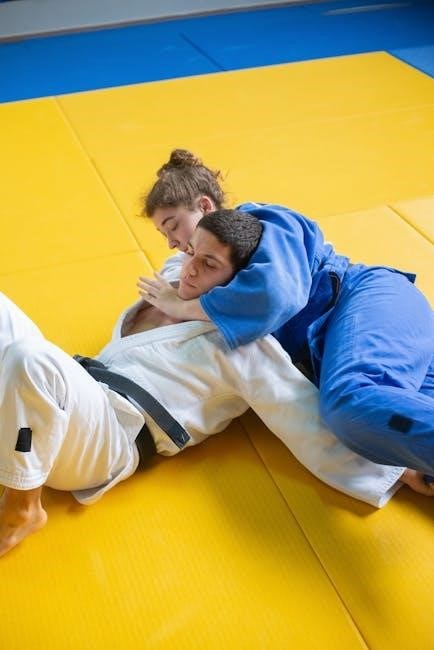
Choosing the Right BJJ Gi Size
Selecting the correct BJJ gi size ensures comfort and performance. Match your measurements to the size chart, consider personal fit preferences, and account for shrinkage after washing.
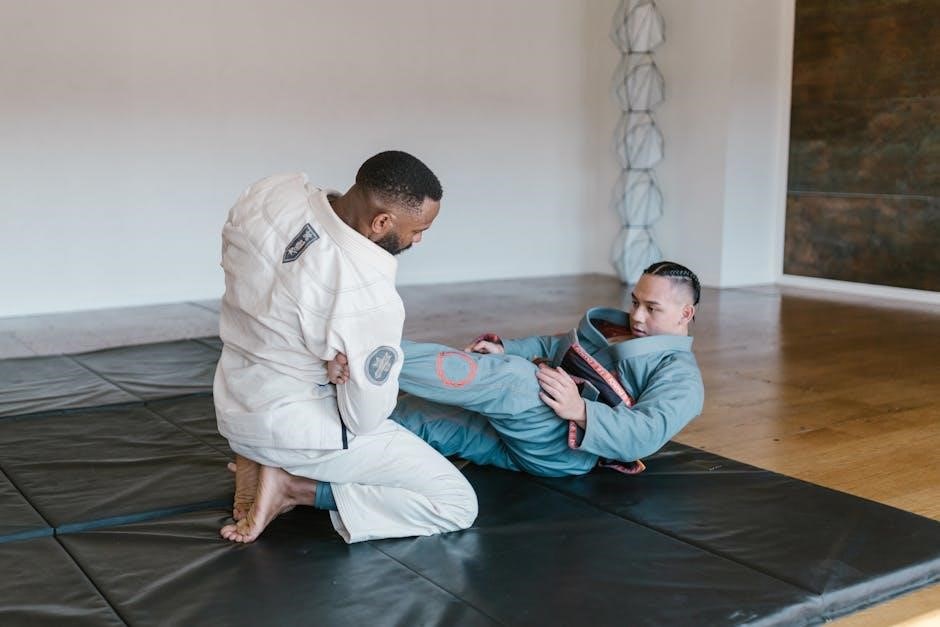
5.1 Matching Measurements to Size Chart
Accurately matching your body measurements to the BJJ gi size chart ensures a proper fit. Start by measuring your chest, waist, sleeve length, and pants inseam. Compare these measurements to the size chart provided by the brand. Pay attention to how the gi fits while standing and moving, as this affects comfort during training. A well-fitting gi improves mobility and reduces distractions, allowing you to focus on your technique and performance.
5.2 Considering Shrinkage After Washing
When selecting a BJJ gi, consider how it may shrink after washing. Most gis are made of cotton, which can shrink slightly when washed in hot water. Check the brand’s guidelines for shrinkage expectations and choose a size that allows for this. Some brands offer pre-shrunk gis to minimize size changes. Washing your gi in cold water and drying it on a low setting can help maintain its fit. Proper care ensures your gi remains comfortable and functional for a long time.
Plan accordingly to avoid a gi that becomes too tight after washing.
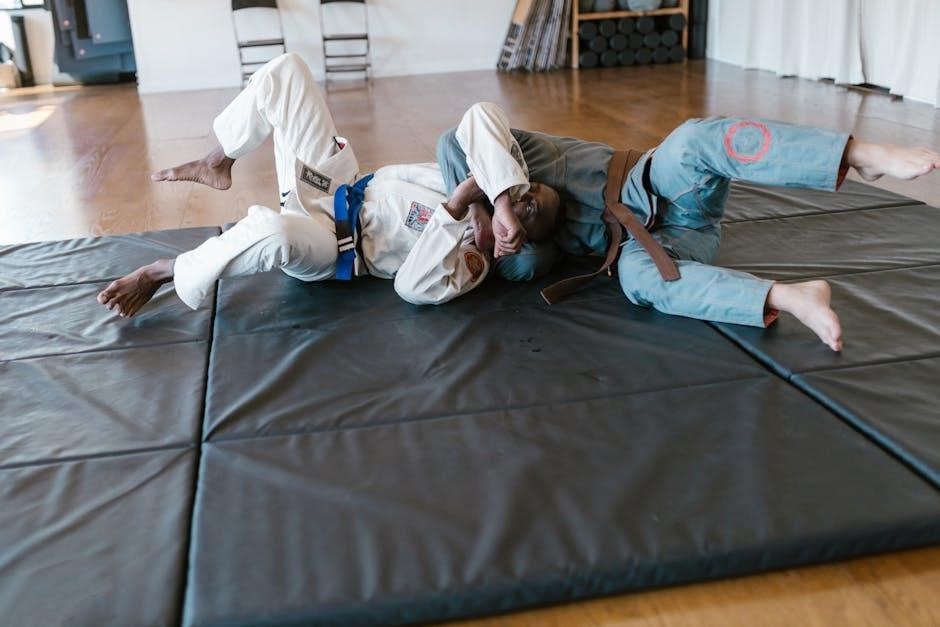
Common Mistakes to Avoid
Avoid guessing your size without measuring and ignoring brand-specific size charts. These mistakes can lead to an ill-fitting gi, affecting performance and comfort during training.
6.1 Guessing Your Size Without Measuring
Guessing your BJJ gi size without measuring is a common mistake. Every brand has different sizing standards, and assuming your size can lead to an ill-fitting gi. Improper fit affects mobility and comfort, hindering performance. Always measure your chest, waist, and sleeve length accurately. Refer to the brand’s size chart to ensure the best fit. Neglecting measurements risks purchasing a gi that’s too tight or too loose, both of which can disrupt training and competition.
6.2 Ignoring the Size Chart Provided by the Brand
Ignoring the size chart provided by the brand is a costly mistake. Each brand has unique sizing standards, and assuming your size without checking can result in a poor fit. This oversight often leads to discomfort, restricted movement, or the need for costly alterations. Always compare your measurements to the brand’s specific chart to ensure accuracy. A well-fitting gi enhances performance and training experience, making it essential to prioritize proper sizing over assumptions.
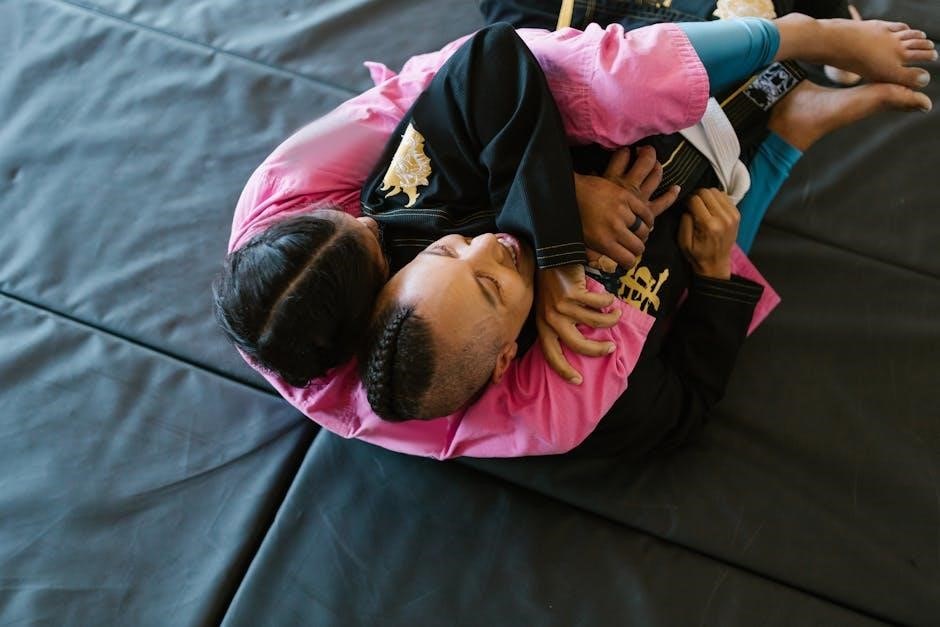
Additional Considerations
Consider competition regulations, fabric type, and color preferences. Proper gi care, like washing and drying, maintains size and quality. These factors ensure optimal performance and longevity.
7.1 Competition Requirements and Size Regulations
When competing, ensure your gi meets official regulations. Gis must fit properly, with sleeves and pants within specified length limits. The gi cannot be overly worn or frayed. Referees inspect gis before matches to ensure compliance. Size charts provided by brands often align with competition standards, but double-checking is crucial. Proper fit and material quality are essential to avoid disqualification; Competitors should also verify weight and height guidelines, as these can affect gi size eligibility. Always prioritize durability and adherence to rules for a smooth competition experience.
7.2 Caring for Your Gi to Maintain Size and Quality
Proper care ensures your BJJ gi retains its size and quality. Wash in cold water using mild detergent to prevent shrinkage and color fading. Avoid fabric softeners, as they can degrade the material. Gently agitate the gi during washing, and avoid soaking it for extended periods. Air-dry the gi away from direct sunlight to maintain fit and prevent shrinkage. Store it in a cool, dry place to preserve fabric integrity. Regular maintenance helps extend the life of your gi and keeps it competition-ready.
